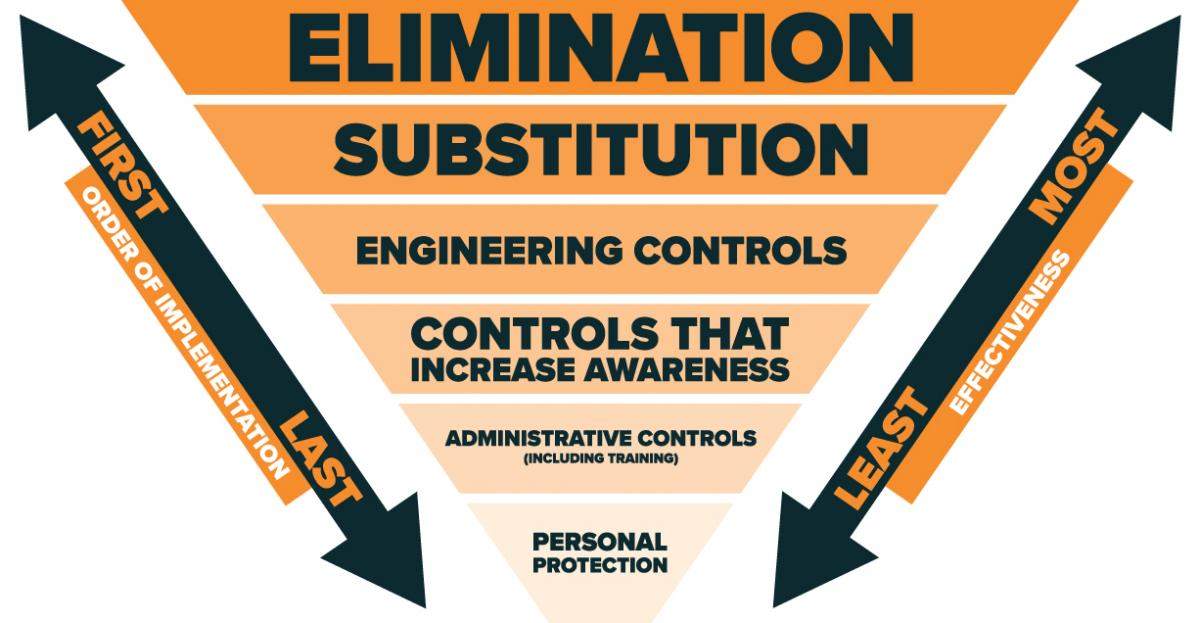The main ways to control a hazard include:
- Elimination (including substitution): remove the hazard from the workplace.
- Engineering Controls: includes designs or modifications to plants, equipment, ventilation systems, and processes that reduce the source of exposure.
- Administrative Controls: controls that alter the way the work is done, including the timing of work, policies and other rules, and work practices such as standards and operating procedures (including training, housekeeping, equipment maintenance, and personal hygiene practices).
- Personal Protective Equipment: equipment worn by individuals to reduce exposure, such as contact with chemicals or exposure to noise.
These methods are also known as the "hierarchy of control" because they should be considered in the order presented (it is always best to try to eliminate the hazard first, etc.).

Controls are usually placed:
- At the source (where the hazard "comes from")
- Along the path (where the hazard "travels")
- At the worker's station

Control at the source and control along the path are also known as engineering controls.
Click here to view a video that explains the hierarchy of controls.
Elimination
Elimination is the process of removing the hazard from the workplace. It is the most effective way to control a risk because the hazard is no longer present. It is the preferred way to control a hazard and should be used whenever possible.
Substitution occurs when a new chemical or substance is used instead of another chemical. It is sometimes grouped with elimination because, in effect, you are removing the first substance or hazard from the workplace. The goal, obviously, is to choose a new chemical that is less hazardous than the original.
The table below provides some examples:
|
Instead Of: |
Consider: |
|
carbon tetrachloride (causes liver damage, and cancer) |
1,1,1-trichloroethane, dichloromethane |
|
benzene (causes cancer) |
toluene, cyclohexane, ketones |
|
pesticides (causes various effects on the body) |
"natural" pesticides such as pyrethrins |
|
organic solvents (causes various effects on the body) |
water-detergent solutions |
|
leaded glazes, paints, pigments (causes various effects on the body) |
versions that do not contain lead |
|
sandstone grinding wheels (causes severe respiratory illness due to silica) |
synthetic grinding wheels such as aluminium oxide |
Remember, however, that you need to make sure the substitute chemical or substance is not causing any harmful effects, and to control and monitor exposures to make sure to the replacement chemical or substance is below occupational exposure limits.
Another type of substitution includes using the same chemical but to use it in a different form. For example, a dry, dusty powder may be a significant inhalation hazard but if this material can be purchased and used as pellets or crystals, there may be less dust in the air and therefore less exposure.
Engineering Controls
Engineering controls are methods that are built into the design of a plant, equipment or process to minimize the hazard. Engineering controls are a very reliable way to control worker exposures as long as the controls are designed, used and maintained properly. The basic types of engineering controls are:
- Process control
- Enclosure and/or isolation of emission source, and
- Ventilation.